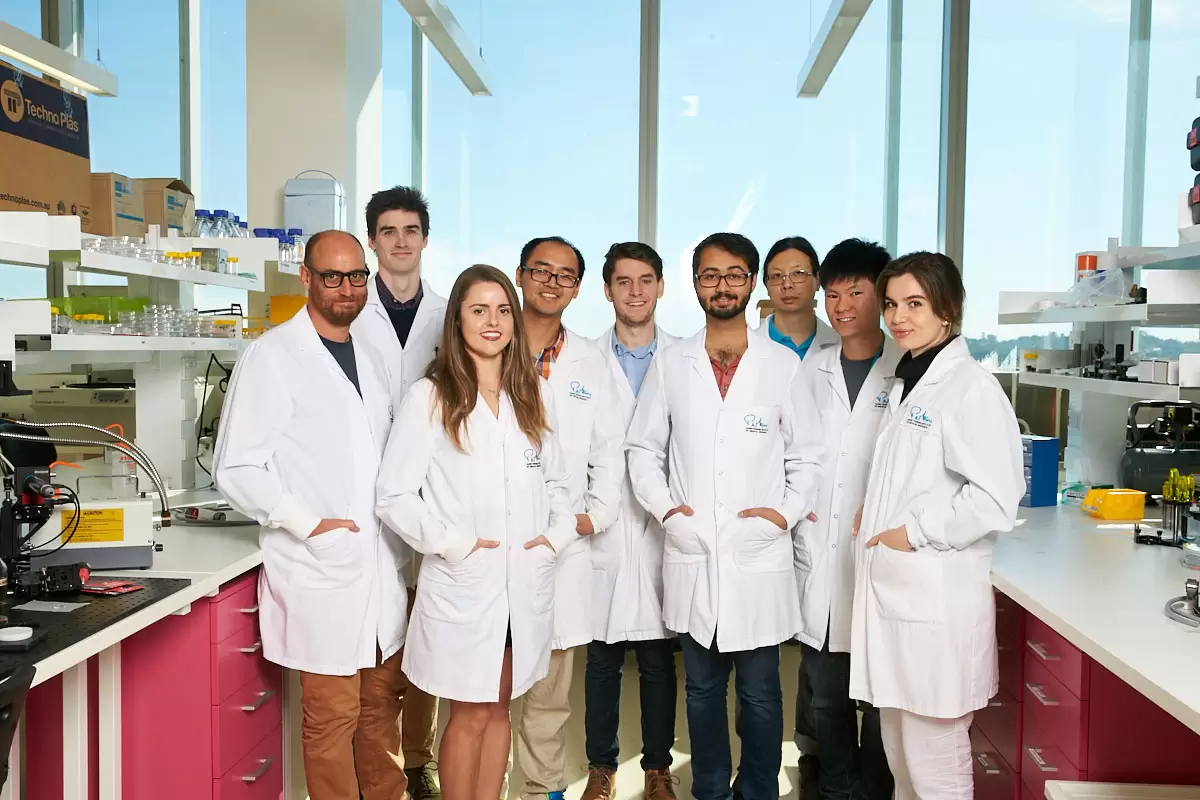One young electrical engineer is applying her engineering skills to help solve medical imaging problems.
At only 21 years of age, it seems unfair to call University of Western Australia (UWA) electrical engineering graduate Brooke Krajancich a late starter to anything. However, it was only in Year 12 that Krajancich considered engineering.
And while in her first three years of undergraduate study she had never even contemplated medical problems, for her honours she worked on a handheld probe for cancer surgery, designing a motion correction algorithm.
“You have to consider all these extra things, like will a surgeon actually use your device? Is it going to actually fit in a surgical cavity? And all these kind of extra considerations just made for really interesting engineering problems,” she said of her honours work.
“I kind of took a task and thought, ‘Wow, this is something I could see myself working in’, going on in my career. So I found this real passion; it just all kind of clicked.”
Krajancich’s project addressed a challenge in Optical Coherence Tomography (OCT) imaging, which works like ultrasound but uses the reflections of a broadband light source instead of sound to generate images of tissue for surgery. The technology is used in a probe being commercialised by BRITElab and OncoRes Medical that deals with better tumour identification and more effective breast cancer surgery.
The problem was that, during scanning, the movement of a surgeon’s hand created distortions.
BRITElab and OncoRes Medical are now commercialising micro-elastography, an imaging technique to help surgeons more easily identify tumours during surgery.
Krajancich explained how they responded to the challenge: “We did this by using a digital camera in-built into the probe and co-registration of features in acquired photographs to measure motion of the hand relative to the tissue surface,” she said.
Junior researchers can be daunted by the demands of implementing research and are “often unsettled by the dynamic nature of life in a research lab,” said Dr Brendan Kennedy, Head of BRITElab.
“Brooke takes this in her stride and is always ready for the next challenge.”

The next challenge is further study at Stanford University, where Krajancich will be completing her doctorate among the first group of Knight-Hennessy scholars. She is the only Australian among the 49 successful applicants, who come from 20 countries.
The fully endowed, graduate-level scholarship, which attracted 3600 applicants, is named after Nike co-founder Phil Knight, who donated US$400 million to start the new program, and John Hennessy, the former long-time Director of Stanford.
The program aims to produce the big-thinking, cross-disciplinary, global problem-solving leaders of tomorrow.
Praising his former student’s intellect, teamwork and work ethic, Kennedy said, “I anticipate that the environment in Stanford will allow her to further flourish and I expect that she will develop into a world-class researcher.”
Off to Silicon Valley
Krajancich decided in her last year of high school to consider engineering. She admits her idea of the profession was influenced by unfair stereotypes.
A trip to the National Youth Science Forum in Canberra helped change that. A chemistry teacher suggested that engineering was a good match for her talents, and Krajancich joined the engineering interest group.
Behind-the-scenes tours of the ANU labs and conversations with engineers working on wind turbines, bridges and dams were “a huge game-changer,” she said.
“I was like, ‘This is actually awesome’. And not all of these people were wearing hard hats and steel cap boots,” Krajancich said.
Now dux of Penrhos College, she headed to UWA, and early on in her degree narrowed her focus down to electrical engineering, particularly for the maths behind it.
Stereotypes again became an issue, and by her count she was one of only 10 women in a class of between 100 and 150.
“Looking for people like yourself is challenging [but] I don’t think that was the biggest off-putting thing for me,” she said.
“It’s the other things that you get, the sort of subtle put-downs and things like that that make getting through engineering sometimes challenging. Things like when lecturers would say — really, I don’t think they even realise that they’d say it — ‘If you’re a boy, you’ve probably seen infrared cameras’. And I’m like, why did you have to put, ‘If you’re a boy’ in front of that?
“And just being taken seriously by other members, the guys, in your class. I think it’s talked about among the media, how there’s not a lot of girls in engineering. That’s one problem. But let’s look after the ones that are.”
Despite these frustrations, Krajancich excelled, finishing with first class honours. After deciding a move to Sydney or Melbourne for further studies wouldn’t be too different to going abroad, she settled on Stanford, citing its strong record at the intersection of engineering and medicine.
She considered herself a long shot at success with her scholarship application but made the final cut and flew out in January for interviews and workshops. The next month, while at work, she was surprised to the point of speechlessness when John Hennessy himself called to share the good news.
Krajancich said she’s “super excited” to return to Silicon Valley, citing the opportunity to reconnect with the other gifted young scholars, and the fearless attitude and ambitiousness of that environment.
“Something that really sort of surprised me is that everyone would present a new idea, or they present a new workshop, or some way of looking at things… Everyone just dived in, and said, ‘What’s the harm in trying?’. They weren’t afraid to fail or to look silly,” she said.
“And that gives way to just an amazing spread of opportunities. Opportunities and crazy ideas come to reality when that happens.”
This article originally appeared as “Surgical thinking” in the October 2018 issue of create magazine
